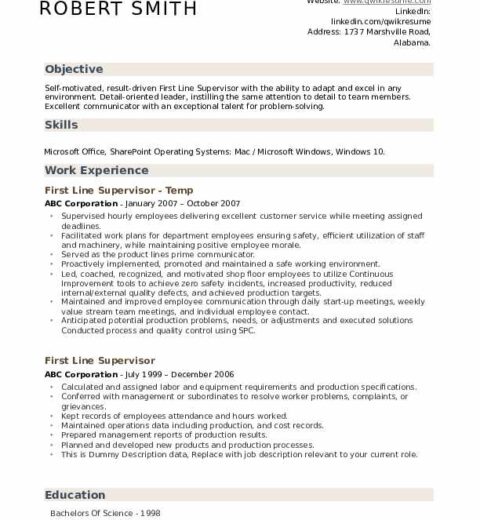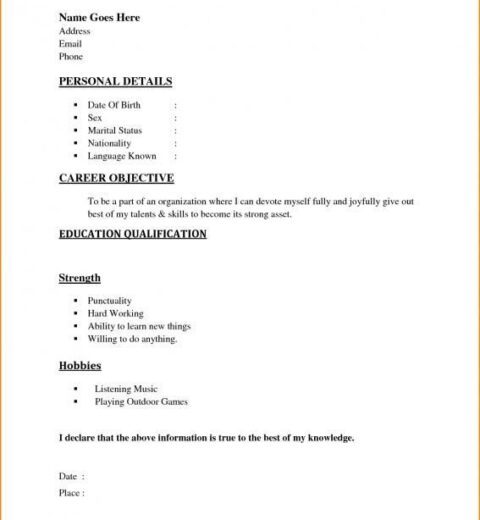The education section of a resume often serves as a crucial component in establishing one’s qualifications and suitability for a targeted role. It not only communicates a candidate’s academic credentials but also reflects their commitment to personal and professional development. In today’s competitive job market, how you present your educational background can make a significant difference. This article offers detailed insights on how to effectively include education on your resume, with guidance on placement, format, and key elements that foster aesthetic appeal.
Understanding the Importance of the Education Section
The education segment is more than just a list of degrees; it is an opportunity to showcase academic accomplishments that resonate with the prospective employer. This section can provide a comprehensive view of your intellectual competencies, discipline, and motivation, which are pivotal in various industries. Its significance escalates for recent graduates or individuals pivoting career paths, as their work experience may be comparatively limited.
Placement: Where Should Education Appear?
The placement of the education section largely depends on the relevance of your academic credentials to the position. For individuals with extensive experience, this section should typically be positioned towards the end of the resume, as hands-on experience often takes precedence. Conversely, for recent graduates or those with minimal work history, the education section should be placed near the top, immediately following the summary or objective statement. This strategically foregrounds their academic background in a manner that captures the attention of hiring managers.
Chronological vs. Functional Resumes
When structuring a resume, candidates often grapple with using either a chronological or functional format. The chronological format emphasizes work history and is beneficial for individuals with consistent employment backgrounds. This format naturally lends itself to a clear presentation of educational credentials. On the other hand, a functional resume focuses primarily on skills and qualifications, with the education section positioned more centrally. In this case, it is important to ensure clarity in presenting your degrees to maintain the intrigue around your qualifications.
Formatting Essentials: Structuring the Education Section
The aesthetic appeal of the education section cannot be overstated; a well-structured and thoughtfully formatted section enhances readability. Here are some formatting tips:
- Bold the headings: Clearly define “Education” as a heading so that it stands out. Sub-headings such as “Degree,” “Institution,” and “Year of Graduation” should also be emphasized for quick reference.
- Consistent font size: Use a uniform font size for all items in this section, typically smaller than the main headings but larger than the body text. This creates a cohesive visual hierarchy.
- Bullet Points: Utilize bullet points to list relevant achievements or honors, making them easier to scan.
- Align text uniformly: Maintain left-alignment or justified formatting throughout the section for a polished appearance.
Key Components of the Education Section
Including essential elements in the education section is paramount. Here’s a breakdown of what to include:
Degree(s)
Begin with the full title of your degree, such as “Bachelor of Arts in Psychology” or “Master of Science in Information Technology.” If you have multiple degrees, list the highest degree first to ensure clarity and highlight your most significant achievements.
Institution
Next, provide the name of the higher education institution where you obtained your degree. If the institution is well-known or has a strong reputation in your field, this can be an advantageous revelation for potential employers.
Graduation Date
Including your graduation date is advised, as it provides context regarding your recent academic involvement. If you graduated several years ago, it is acceptable to omit the specific date and instead list the year, such as “Graduated in 2019.”
Honors and Achievements
Listing pertinent honors, such as cum laude distinctions, scholarships, or awards, can substantiate your academic prowess. These accolades demonstrate not only your intellectual capabilities but also your dedication to excellence within your field.
Relevant Coursework or Projects
For candidates with limited work experience, including relevant courses or projects that align with the job description can provide contextual proficiency. This addition allows you to showcase specialized knowledge that might set you apart from other candidates.
Formatting Examples
To provide clarity, consider these examples:
- Bachelor of Arts in Psychology
University of California, Berkeley
Graduated: May 2021 - Master of Science in Information Technology
Massachusetts Institute of Technology
Graduated: May 2019
Dean’s List, 2018 - Relevant Coursework: Data Structures, Network Security
Projects: Developed a secure application for data management.
Final Thoughts
The education section is a vital feature of your resume that, when executed effectively, can create a favorable impression on hiring managers. Balancing aesthetic appeal with essential information ensures that this section captures attention and highlights your qualifications. By carefully considering placement, formatting, and the topics to include, candidates can craft an education section that is not only informative but also compelling, ultimately advancing their opportunities within their desired field. Take the time to refine this section; the impact of your educational background can resonate profoundly within the hiring process.




